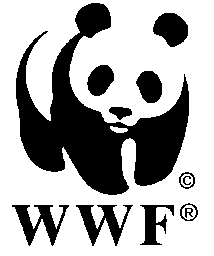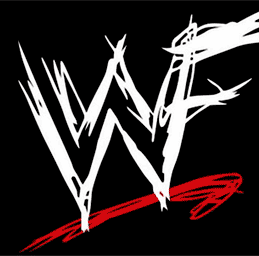
VINCE MCMAHON
|
McMahon is the Chairman and CEO of Stamford, Connecticut-based professional wrestling promotion World Wrestling Entertainment (branded as WWE). Upon acquiring World Championship Wrestling (WCW) and Extreme Championship Wrestling (ECW), McMahon's WWE became the sole remaining major American professional wrestling promotion (until the national expansion of Total Nonstop Action Wrestling and Ring of Honor). McMahon plays a character known by the ring name Mr. McMahon, based on his real life persona. He is a two-time world champion, having won the WWF Championship and ECW World Championship. He was also the winner of the 1999 Royal Rumble. McMahon is married to Linda McMahon, with whom he ran WWE from its establishment in 1980 until she resigned as the CEO in September 2009. McMahon has a $12 million penthouse in Manhattan, a $40 million mansion in Greenwich, Connecticut, a $20 million vacation home, and a 47-foot sports yacht named Sexy Bitch. Forbes has noted McMahon's wealth at 1.1 billion dollars, backing up the WWE's claim he was a billionaire for the year 2001, though he is reported to have since dropped off the list. McMahon was born on August 24, 1945 in Pinehurst, North Carolina. McMahon's father, Vincent James McMahon, had left the family while McMahon was still a baby. McMahon did not meet his father until age 12. Vince spent the majority of his childhood living with his mother and a string of stepfathers. According to an interview with Playboy, he attended and graduated, in 1964, from Fishburne Military School in Waynesboro, Virginia. McMahon claimed one of his stepfathers, Leo Lupton, used to beat his mother and attacked him when he tried to protect her. He said, "It is unfortunate that he died before I could kill him. I would have enjoyed that." In his early life, McMahon also overcame dyslexia. 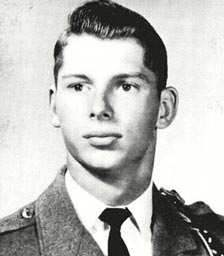 McMahon
married Linda McMahon on August 26, 1966 in New Bern, North Carolina. The
two met in church when Linda was 13 and Vince was 16. At that time McMahon
was known as Vince Lupton, using his stepfather's surname. They were introduced
by Vince's mother, Vicky H. Lupton (now Vicky H. Askew). They have two children,
Shane and Stephanie, both of whom have spent time in the WWF/E both onscreen
and behind the scenes. Shane left the company as of January 1, 2010; while
Stephanie continues to be active in a backstage role. McMahon
married Linda McMahon on August 26, 1966 in New Bern, North Carolina. The
two met in church when Linda was 13 and Vince was 16. At that time McMahon
was known as Vince Lupton, using his stepfather's surname. They were introduced
by Vince's mother, Vicky H. Lupton (now Vicky H. Askew). They have two children,
Shane and Stephanie, both of whom have spent time in the WWF/E both onscreen
and behind the scenes. Shane left the company as of January 1, 2010; while
Stephanie continues to be active in a backstage role.
Throughout the 1970s, McMahon became the prominent force in his father's company, and over the next decade, Vince assisted his father in tripling TV syndication. He pushed for the renaming of the company to the World Wrestling Federation (WWF). The young McMahon was also behind the Muhammad Ali versus Antonio Inoki match of 1976. In 1979, Vince purchased the Cape Cod Coliseum, where he promoted hockey games and concerts in addition to pro wrestling, as he began to prove that he was capable of running the WWF after his father’s retirement. By 1980, McMahon had become chairman of the company, and Titan Sports was incorporated; in 1982, a 37-year old McMahon led Titan’s acquisition of the Capitol Wrestling Co. from his ailing father (who died in May 1984), as he and his wife Linda took control of the World Wrestling Federation. At the time of his purchase of the WWF, professional wrestling was a business run by regional offices. The various promoters shared an understanding that they would not invade each other’s territories, as this practice had gone on undeterred for decades. McMahon had a different vision of what the industry could become. In 1963, the WWF split from the National Wrestling Alliance, which was the governing body for all the regional territories across the country and as far away as Japan. He began expanding the company nationally by promoting in areas outside of the company's Northeast U.S. stomping grounds and by signing talent from other companies, such as the American Wrestling Association (AWA). In 1984, he recruited Hulk Hogan to be the WWF’s charismatic new megastar, and the two quickly drew the ire of industry peers as the promotion began traveling and broadcasting into rival territories. Nevertheless, McMahon (who still also fronted as the WWF’s squeaky clean babyface announcer) created The Rock 'n' Wrestling Connection by incorporating pop music stars into wrestling storylines. As a result, the WWF was able to expand its fanbase into a national mainstream audience as the promotion was featured heavily on MTV programming. On March 31, 1985, he promoted the first WrestleMania to be held at Madison Square Garden while airing on closed circuit TV throughout the U.S. WrestleMania was an undisputed success. As a result, the WWF thus stood head and shoulders above all its competition, and Hulk Hogan soon became a full-fledged pop-culture icon and child role model. During the late 1980s, McMahon shaped the WWF into a unique sports entertainment brand that reached out to family audiences while attracting fans who had never before paid attention to pro wrestling. By directing his storylines towards highly publicized supercards, McMahon initiated a brand-new revenue stream by promoting these events live on PPV television, a concept that would completely revolutionize event programming for all sports while catapulting the WWF into a multi-million dollar empire. In 1987, McMahon reportedly drew 93,173 fans to the Pontiac Silverdome (which was called the "biggest crowd in Sports entertainment history") for WrestleMania III, which featured the main event of Hulk Hogan versus André the Giant.
In the early 1980s, McMahon briefly promoted ice hockey in South Yarmouth, Massachusetts. His Cape Cod Buccaneers played at the Cape Cod Coliseum and were founding members of the Atlantic Coast Hockey League, an AA circuit. Historically, the ACHL is considered a forgotten link between the rough and tumble loops of the 1970s like the NAHL, lampooned in the classic movie Slap Shot, and today's more credible East Coast Hockey League. In October 1999, McMahon led the WWF in an initial public offering of company stock. On March 23, 2001, he purchased the fading WCW for $5 million. Three days later, his “victory speech” was simulcast on both WWF Raw and WCW Nitro. In 2000, McMahon again ventured outside the world of professional wrestling by launching the XFL. The league eventually began in February 2001 with McMahon making an appearance at the first game. The league, however, quickly folded after lack of publicity. In the summer of 2003, McMahon acquired Extreme Championship Wrestling in bankruptcy court, leaving McMahon and the WWF as the only major wrestling promotion left in North America. In 2010, McMahon announced plans to launch a brand new cable network by summer 2011, although, as of early 2013, those plans have not been realized. Mr. McMahon is the on-screen character of Vince McMahon, with the gimmick of being an often egotistical and conniving boss. The character was spawned from the real-life hatred many wrestling fans had for McMahon following the Montreal Screwjob, at the 1997 Survivor Series. Several other gimmicks have become integral parts of McMahon's on-camera persona, such as his throaty exclamation of "You're fired!", and his "power walk"—an exaggerated strut toward the ring, swinging his arms and bobbing his head from side to side in a cocky manner. According to Jim Cornette, the power walk was inspired by one of McMahon's favorite wrestlers as a child, Dr. Jerry Graham. The Fabulous Moolah, however, claims in her autobiography that "Nature Boy" Buddy Rogers was the inspiration for the walk. McMahon has occasionally dropped his character performance upon real-life events affecting WWE, such as the death of Owen Hart at Over the Edge in 1999, the September 11 attacks on the World Trade Center and the death of Chris Benoit. Prior to the evolution of the Mr. McMahon character, McMahon was primarily an announcer on television, with his behind-the-scenes involvement generally kept off TV for kayfabe-based reasons. While he did publicly identify himself as the owner of the WWF outside of WWF programming, on TV his ownership of the WWF was considered an open secret through the mid-1990s. McMahon made his announcing debut in 1971 when he replaced Ray Morgan after Morgan had a pay dispute with McMahon's father, Vince McMahon, Sr., shortly before a scheduled TV taping. The elder McMahon let Morgan walk instead of giving into his demands and needed a replacement on the spot, offering it to his son. For the younger McMahon, it was also somewhat as a compromise, as it allowed him to appear on television. McMahon wanted to be a wrestler but his father would not let him, explaining that promoters did not appear on the show and should stay apart from their wrestlers. McMahon eventually became the regular play-by-play announcer and maintained that role until November 1997, portraying himself as easily-excited and over-the-top. 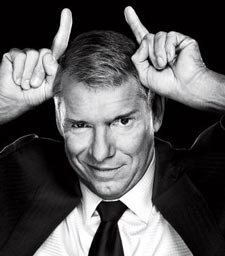 In addition to matches, McMahon also hosted other WWF shows, and
introduced WWF programming to TBS on Black Saturday, upon the WWF's acquisition
of Georgia Championship Wrestling and its lucrative Saturday night timeslot.
(McMahon sold the timeslot to Jim Crockett Promotions after the move backfired
on him; he eventually acquired JCP's successor company. World Championship
Wrestling, from AOL Time Warner in 2001.) At the 1987 Slammy Awards, McMahon
performed in a musical number and sang the song "Stand Back". The campy
"Stand Back" video has since resurfaced several times over the years as
a running gag between McMahon and any face wrestler he is feuding with at
that particular time, and was included on the 2006 McMahon DVD. As with
most play-by-play announcers, McMahon was a babyface "voice of the fans",
in contrast to the heel color commentator, usually Jesse Ventura, Bobby
Heenan or Jerry Lawler. While most of McMahon's on-screen physicality took
place during his "Mr. McMahon" character later in his career, he was twice
involved in physical altercations on WWF television as a commentator; once
on the September 28, 1991 episode of WWF Superstars of Wrestling, when Roddy
Piper mistakenly hit him with a folding chair aimed at Ric Flair (requiring
McMahon to be taken out of the arena on a stretcher), and again on the November
8, 1993 episode of Monday Night Raw, when Randy Savage hurled him to the
floor in an attempt to attack Crush after McMahon attempted to restrain
him. In addition to matches, McMahon also hosted other WWF shows, and
introduced WWF programming to TBS on Black Saturday, upon the WWF's acquisition
of Georgia Championship Wrestling and its lucrative Saturday night timeslot.
(McMahon sold the timeslot to Jim Crockett Promotions after the move backfired
on him; he eventually acquired JCP's successor company. World Championship
Wrestling, from AOL Time Warner in 2001.) At the 1987 Slammy Awards, McMahon
performed in a musical number and sang the song "Stand Back". The campy
"Stand Back" video has since resurfaced several times over the years as
a running gag between McMahon and any face wrestler he is feuding with at
that particular time, and was included on the 2006 McMahon DVD. As with
most play-by-play announcers, McMahon was a babyface "voice of the fans",
in contrast to the heel color commentator, usually Jesse Ventura, Bobby
Heenan or Jerry Lawler. While most of McMahon's on-screen physicality took
place during his "Mr. McMahon" character later in his career, he was twice
involved in physical altercations on WWF television as a commentator; once
on the September 28, 1991 episode of WWF Superstars of Wrestling, when Roddy
Piper mistakenly hit him with a folding chair aimed at Ric Flair (requiring
McMahon to be taken out of the arena on a stretcher), and again on the November
8, 1993 episode of Monday Night Raw, when Randy Savage hurled him to the
floor in an attempt to attack Crush after McMahon attempted to restrain
him. Of course we can't discuss pro wrestling without discussing anabolic steroids used to bulk up the wrestlers and make them stronger, sexier and more injury resistant. Pro wrestling without steroids is like chocolate milk without .... uh ... chocolate ... or milk! In 1993, he was indicted after a steroid controversy engulfed the promotion. McMahon was put on trial in 1994, accused of distributing steroids to his wrestlers. One former wrestler, Nailz, was called by the prosecution to testify against McMahon, stating that Vince encouraged him to start using steroids. Ultimately, the jury disregarded his testimony after he claimed he hated McMahon. His wife Linda became CEO of the WWF during the trial. He was acquitted of all charges though he admitted to taking steroids himself in the 1980s. The prosecution made Hulk Hogan its star witness, however, when called to testify, Hogan stated that at no time did Vince McMahon ever sell steroids. |
||||||||||

|
HOME PAGE |
|
|
|
| HOME | FIGHTERS |
| Smart bodybuilder/fighter/godzillionaire defends self |
|
Call me old fashioned but I find Vince McMahon at his most alluring
when he is just sitting around talking about something, something like Vince McMahon!
Even if he wears a suit. I know that underneath that shirt lies
the body of perfection. Frankly, Vince McMahon and Arnold Schwarzenegger
are both very unusual bodybuilders ... they actually did something with
their lives! Most muscleguys are gym bunnies hiding behind their
looks and not so accomplished and successful.
That's what happens in this clip from a 2001 HBO interview with Bob Costas. Of course if you want to succeed you have to be willing to fail. Like McMahon did with his now forgotten NFL competitor the XFL. Ever the salesman, McMahon discusses the things that motivate him to keep trying too hard to make up for the inevitable failure. And have I mentioned he was probably on anabolic steroids for the entire interview? So am I right now! Tee hee! |
| Vince McMahon sexy in a suit .... and "Michelle" ain't bad either... |
|
Well what do you know, Vince McMahon IS sexy in a suit and tie!
Here he gets into some kind of a situation on a USA network show that
I never remember happening on free TV when I watched wrestling. Back
in the 1980's and 1990's, before youtube, the only place to see bodybuilders
regularly was on wrestling. Fortunately it was on three channels
at once on Saturday mornings. But they NEVER got this explicit
when I was watching. Wrestling has changed since I stopped watching,
and that was some time ago. Critics complain its no longer appropriate
for it's many underage fans.
|

|

|
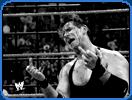
|

|
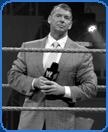
|

|
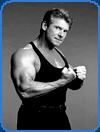
|
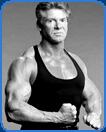
|

|

|
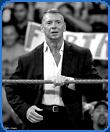
|

|
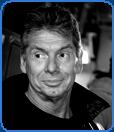
|
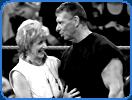
|
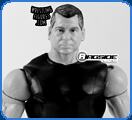
|
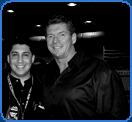
|
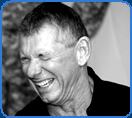
|

|

|

|
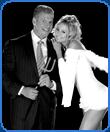
|

|

|
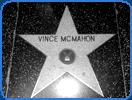
Hollywood Walk of Fame |

|

|

|
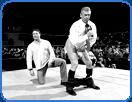
|
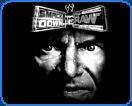
|

|

|
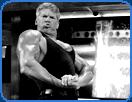
|

|

|
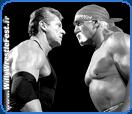
|

|

|
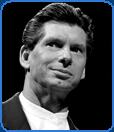
|

|
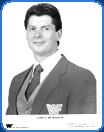
1987 headshot |

|

|
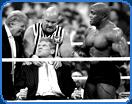
|

